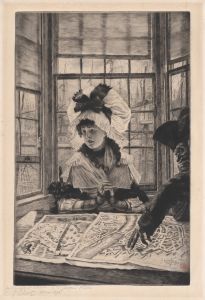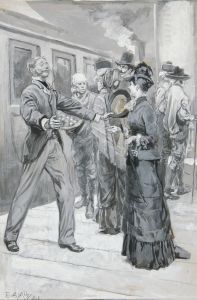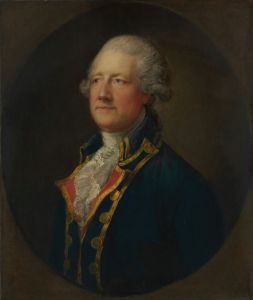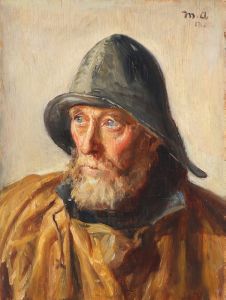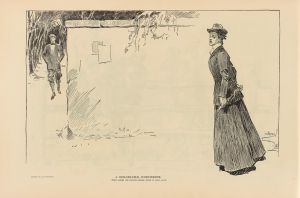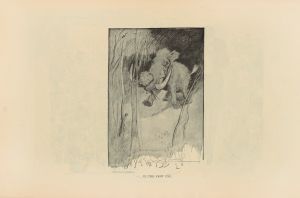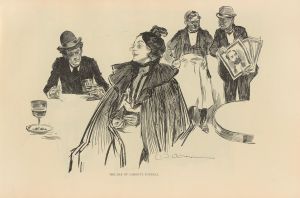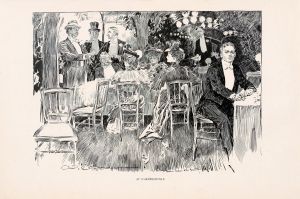
Both those Lords are after her
A hand-painted replica of Charles Dana Gibson’s masterpiece Both those Lords are after her, meticulously crafted by professional artists to capture the true essence of the original. Each piece is created with museum-quality canvas and rare mineral pigments, carefully painted by experienced artists with delicate brushstrokes and rich, layered colors to perfectly recreate the texture of the original artwork. Unlike machine-printed reproductions, this hand-painted version brings the painting to life, infused with the artist’s emotions and skill in every stroke. Whether for personal collection or home decoration, it instantly elevates the artistic atmosphere of any space.
Charles Dana Gibson was an influential American illustrator best known for his creation of the "Gibson Girl," a representation of the idealized American woman at the turn of the 20th century. One of his notable works is the illustration titled "Both Those Lords are After Her." This piece exemplifies Gibson's keen ability to capture societal norms and gender dynamics of his time through his art.
"Both Those Lords are After Her" is a black-and-white illustration that reflects Gibson's characteristic style, which combines detailed line work with a keen sense of humor and social commentary. The illustration depicts a young woman, presumably a Gibson Girl, who is the center of attention for two gentlemen, referred to as "lords" in the title. The scene is set in a social environment, possibly a ballroom or a similar gathering, which was a common setting for Gibson's illustrations. The two men appear to be vying for the woman's attention, a scenario that humorously highlights the social dynamics and courtship rituals of the era.
Gibson's work often explored themes of romance, social status, and the roles of men and women in society. The Gibson Girl, as seen in this illustration, was portrayed as independent, confident, and attractive, embodying the changing roles of women during the late 19th and early 20th centuries. She was often depicted as being pursued by suitors, reflecting both the admiration and the societal expectations placed upon women of that time.
The illustration "Both Those Lords are After Her" is a testament to Gibson's skill in capturing the nuances of social interactions. His work was widely published in magazines such as Life, Harper's Weekly, and Scribner's, making his illustrations highly influential in shaping public perceptions of beauty and femininity. The Gibson Girl became an iconic figure, representing a blend of traditional femininity and emerging modernity.
Gibson's illustrations, including "Both Those Lords are After Her," were not only artistic expressions but also commentaries on the social fabric of his time. They provided a lens through which contemporary audiences could examine and reflect upon their own societal norms and values. His work remains significant in the study of American art and culture, offering insights into the gender roles and social expectations of the early 20th century.
In summary, "Both Those Lords are After Her" is a classic example of Charles Dana Gibson's ability to encapsulate the essence of an era through his art. It reflects the humor, social commentary, and artistic skill that made Gibson one of the most celebrated illustrators of his time. His work continues to be appreciated for its historical significance and its contribution to the visual culture of the United States.





